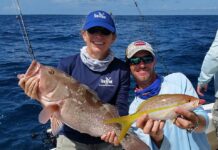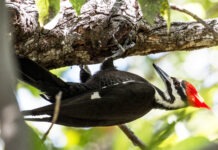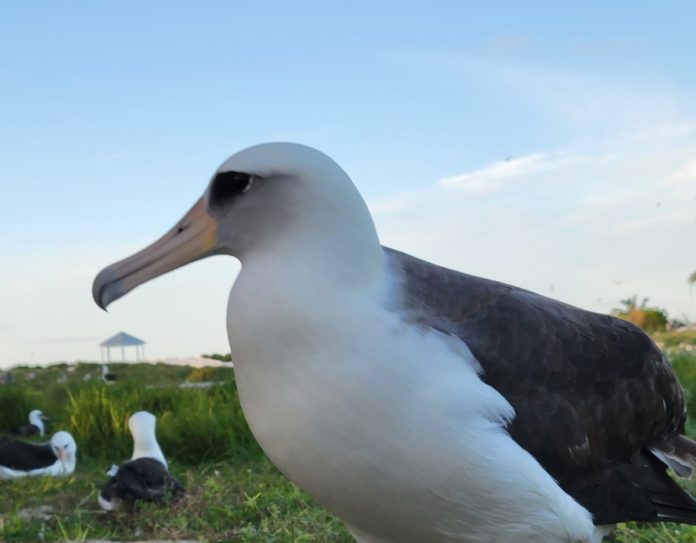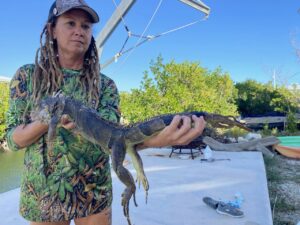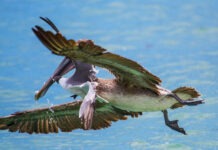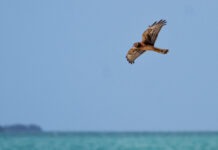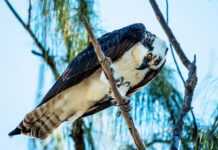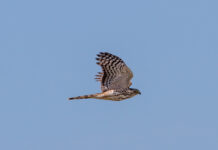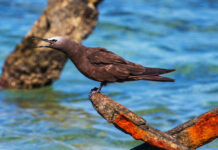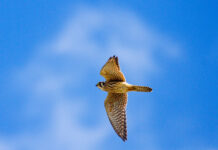Christmas carol mathematics
This has been calculated before, but I started a spreadsheet the other day to double check the math on exactly how many birds are given in the song “The Twelve Days of Christmas.”
Giving a partridge in a pear tree for 12 straight days gets you to 12 partridges. Two turtle doves on the second day means 11 days of giving two birds, which adds another 22 to the list. And so on, through all calling birds, French hens, geese a-laying, and swans a-swimming.
I’ve seen an argument made that the five golden rings somehow represent a species of pheasant, but that seems a fringe notion without a lot of support.
The song seems purpose-built to drive birders a little crazy. For instance, the calling birds? What kind of calling birds? The song was written in England, which means there were 643 possibilities. Most likely they were some type of songbird. But does the gargling purr of a European nightjar count? Or the effervescent twittering of a common swift? Nothing drives a birder madder than something being called a bird with no follow-up details. I mean even the partridge in the pear tree – there are 43 species of partridges in the world, two of them native to England. Life is torture without specifics.
We’re just going to skip over the human rights/human trafficking issues brought about by the notion of giving away lords a-leaping or maids a-milking and stick to avifauna.
So, if you add them all up, you get a total of 184 birds, which is a substantial, and to many minds, an excessive number of birds to give anyone. Actually, to my mind, one of the things that makes birds great is the fact that they are not owned, that they have this physical freedom that we can only wonder at, which makes me opposed to possessing birds as a general rule. But that’s me.
I am not alone in having some issues with the song. The Washington State Department of Natural Resources recently tweeted: “It is reckless and illegal to give your true love any amount of wild birds for Christmas.” In a similar vein, the U.S. Fish and Wildlife Service account cautioned, “Seven swans a-swimming: Best enjoyed in the wild!” and “You certainly don’t want to mess with any geese a-laying, but especially not six!”
Science sez birdwatching is good for you
There’s been a story from the New York Times getting reposted a lot in birding circles in recent days with some pretty heartening information: birdwatching, it turns out, is good for you.
It was very similar to a story published on the National Geographic UK website.
Both stories acknowledge that there isn’t a lot of data about the physical benefits, though everyone agrees that getting out and walking around, which birdwatching often requires, is generally beneficial.
The benefits are largely to one’s mental well-being. And this is backed up by science – specifically an article published in the journal Nature at the end of October. (Links to all three stories can be found at markhedden.com/notes.)
Under the narcolepsy-inducing headline “Smartphone-based ecological momentary assessment reveals mental health benefits of birdlife” the article documents the results of a three-and-a-half-year study of 1,292 subjects.
Over a period of 14 days, each app user was asked, “Can you see or hear birds right now?” They’d have an hour to answer in order to have the survey considered complete and added to the data set. They were then asked a series of 10 questions about their mental well-being. There’s a lot of detailed data crunching in the story if you want to get granular about it.
“Everyday encounters with birdlife were associated with time-lasting improvements in mental well-being. These improvements were evident not only in healthy people but also in those with a diagnosis of depression, the most common mental illness across the world. These findings have potential implications for both environmental and wildlife protection and mental healthcare policies,” the study’s authors wrote.
I’m looking forward to the day when you can get a prescription to go birdwatching.
One more trip around the sun for an amazing bird
Wisdom, a Laysan albatross who nests on the Midway Atoll National Wildlife Refuge in the Papahānaumokuākea Marine National Monument, deep in the heart of the Pacific Ocean, came back. This is notable because Wisdom is at least 71 years old and is the oldest known living bird in the world. Field biologists banded her in 1956, when she was laying what may or may not have been her first egg.
Laysan albatrosses don’t nest every year and the USFWS estimates that Wisdom has laid between 30 and 36 eggs in her lifetime. One of her offspring even came back to nest a few feet away from her.
The last time she laid an egg was in 2020, though the last time she raised a chick was 2017. Sadly her partner Akeakamai, with whom she had mated since 2006, has not been seen in the last two years and Wisdom is presumed to be widowed.
An alert reader with a good memory might notice that I wrote something about her last year, but an amazing story like Wisdom’s will never get old. I really hope to write something about her again next year.











